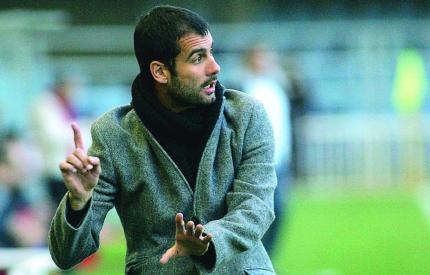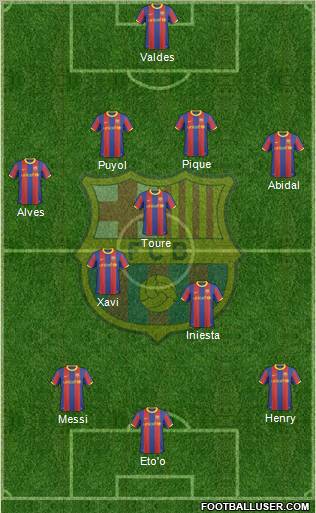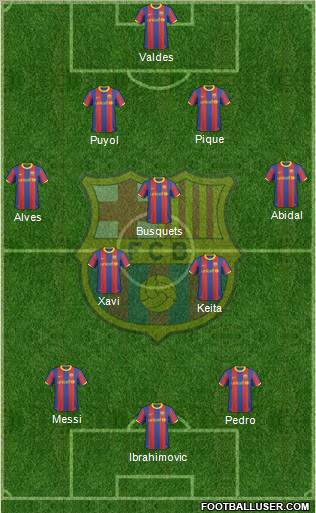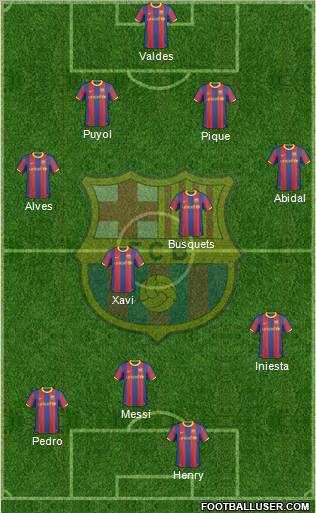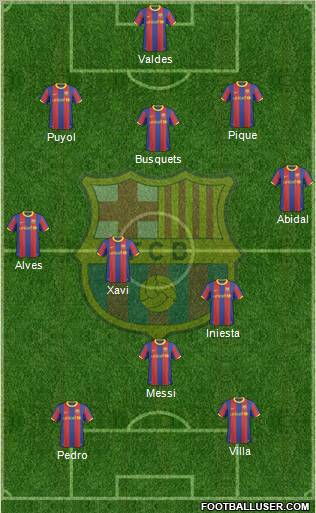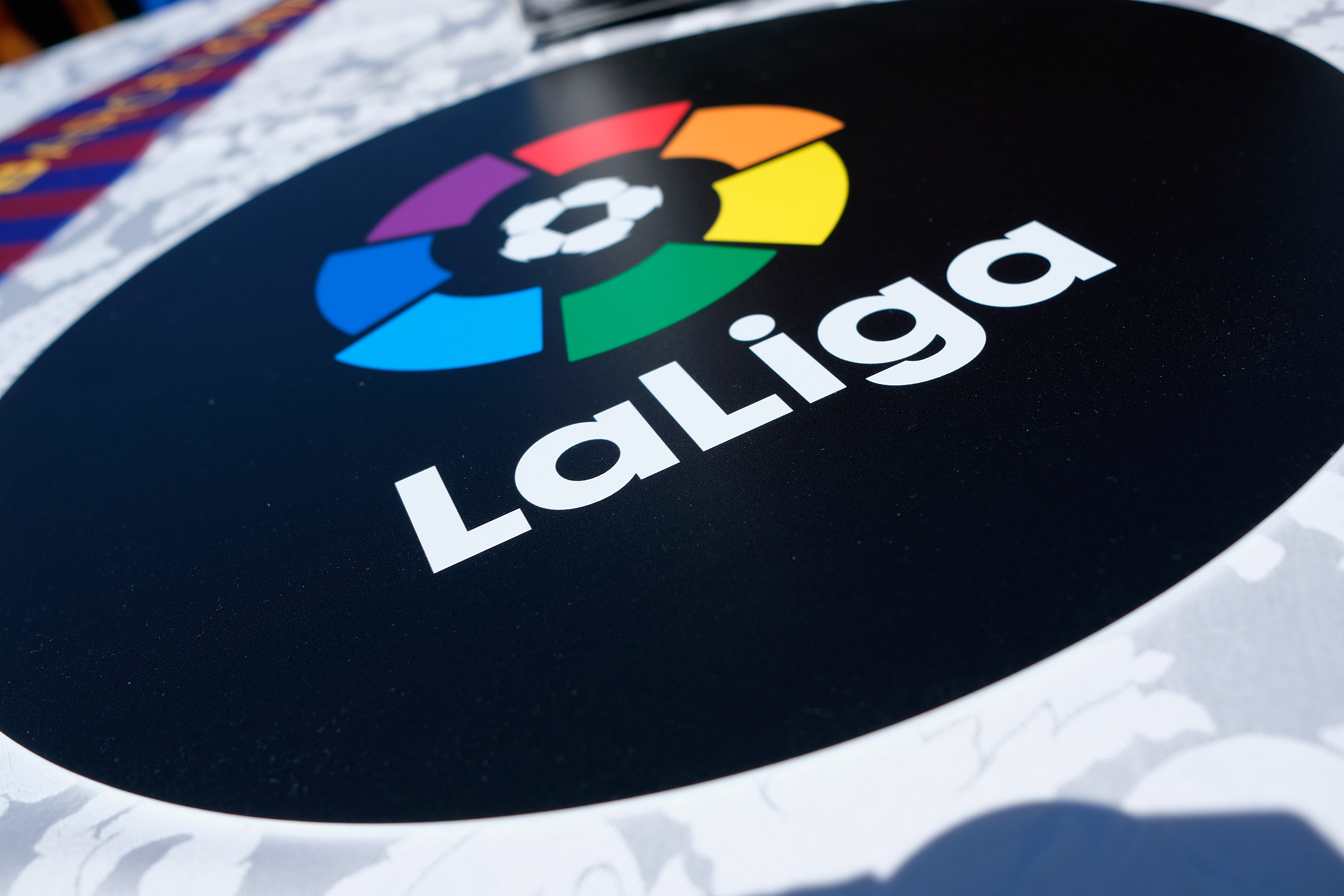Pep Guardiola’s appointment at the helm of Barcelona’s affairs heralded an era of unprecedented success in the club’s history. They have comprehensively outclassed the opposition on the pitched and received endless praise from fans and pundits for their ‘tiki-taka’ football. How much of the success can be credited to the manager is a topic of frequent debate, as many believe than any manager would win trophies if he inherited a team brimming with sheer class. What further encourages the critics are his forays into the transfer market, especially the amount he paid for Ibrahimovic was questionable to say the least. However, tactically, he has helped his team improve season after season.
2008-09 – The Transformation
“We play in the other team’s half as much as possible because I get worried when the ball is in my half” Guardiola had once said. It is not just a statement, but the philosophy around which he has designed one of the greatest teams of all times. A philosophy, which led Barcelona to 6 titles in his first season, and transformed a team that had finished 18 points behind Real Madrid the season before that.
Retaining possession and quick interchange of passes, along with intense pressing high up the opposition’s half, have become the trademark of this team ever since. The defense played a high line and ran the risk of being caught out with a ball over the top, which meant that not loosing possession was necessary.
On the left, Henry hugged the touch line while Messi would always cut in from the right. The full-backs complemented the forwards perfectly with the less adventurous Abidal playing on the left and Alves, with his tremendous speed and great stamina, bombing up and down the right flank. In midfield, Xavi controlled the game while Iniesta made frequent dashes into the box. Yaya Toure provided them the physical presence and was the deepest of the 3 midfielders; his job was to protect the center-backs if the full backs were caught out position.
The only variation Guardiola seemed to have was to switch the positions of Eto’o and Messi. Messi could play as a classic no. 9 or in a withdrawn role. The first goal in the Champions League final was scored by Eto’o playing as a right forward, and Messi played in the false 9 role for the very first time when they destroyed Madrid 6-2.
2009-10 – Plan B
After winning every competition they entered, it was always going to be impossible to match the previous year’s performance and Barca failed to win both the Champions League and the Copa del Rey. However, in the league, the team’s performance bettered the previous season’s as they finished with a record 99 points and lost only 1 game all season.
But it was apparent that Guardiola had identified the need to bring changes into the team’s style of play to keep the opposition guessing. The signing of Ibrahimovic was a clear step in this direction. He added another dimension to the forward line and provided the team with a more direct route to goal. His relative failure can be attributed largely to the fact that he disrupted Messi’s natural game and he lacked versatility which meant that Guardiola couldn’t switch his front 3 anymore. Also, the team took their pressing to another level – it became quicker and more intense than the previous season, as was apparent at the Emirates in the Champions League.
Iniesta’s involvement in the team was limited due to an injury, and Keita played regularly. His loss not only meant that they would miss his creativity but also there were fewer dashing runs from midfield. Henry gave way to the more dynamic Pedro and Busquets’s ability on the ball saw him gain preference over Toure.
In the second half of the season, he sometimes deployed a loose 4-2-4 formation where Messi played off the striker, with Pedro high up on the right. The left side of the formation was defined by the player used. Iniesta played as an inverted winger who would cut inside, while Keita would be more inclined to more towards central midfield. The formation worked wonderfully against Valencia, Arsenal and Stuttgart.
2010-11 – Messi as False 9
This was the season when tactics which were previously used as an alternative by Guardiola, became mainstream. Messi was unstoppable in the false 9 role scoring 53 goals. A distinct feature at the back was how inclined the center backs were to move towards the wings, which created plenty of space for Busquets to drop between them. This provided him more time on the ball to pick out a pass. Messi would drop very deep, often closer to Xavi than to the forwards and was devastating in the space he found between the opposition’s midfield and defensive lines.
There were not too many variations to the system. The fluidity of the front 3 was restored with Villa and Pedro often switching flanks. Against Valencia, Guardiola started the game with 3 centre backs, Busquets playing in the back line and Mascherano came into the team at the expense of Pedro. Iniesta too was used as a left forward on occasions, like in the Champions League against Shakhtar.
What next?
For the coming season, one can only speculate on what changes Guardiola will look to bring to his squad. The transfer of Alexis Sanchez is an intriguing one, as his favored position at Udinese last season was ‘in the hole’, currently occupied at Barcelona by the best player in the world. So he will perhaps play as a right or left forward. Although, not very different to Pedro, he is perhaps more direct, and will always look to beat the defender with his speed and dribbling.
The same can be said of their other transfer target Cesc Fabregas, who has played all his football in England, hence will be slightly more direct in his approach than Xavi or Iniesta. He may look to shoot in a situation when the other two try to find a pass. Also, it shows that the manager has identified the lack of depth in his squad, especially in a season when they will have to participate in competitions like the FIFA Club World Cup and UEFA Super Cup.
“If it wasn’t for Messi, I’d be coaching in the third division” he once told a fan. Call it modesty or managerial mind-games but Guardiola’s statement is far from the truth. He deserves far more credit for his managerial attributes than he usually receives, and Barcelona’s continuous evolution is proof of his tactical ingenuity.
